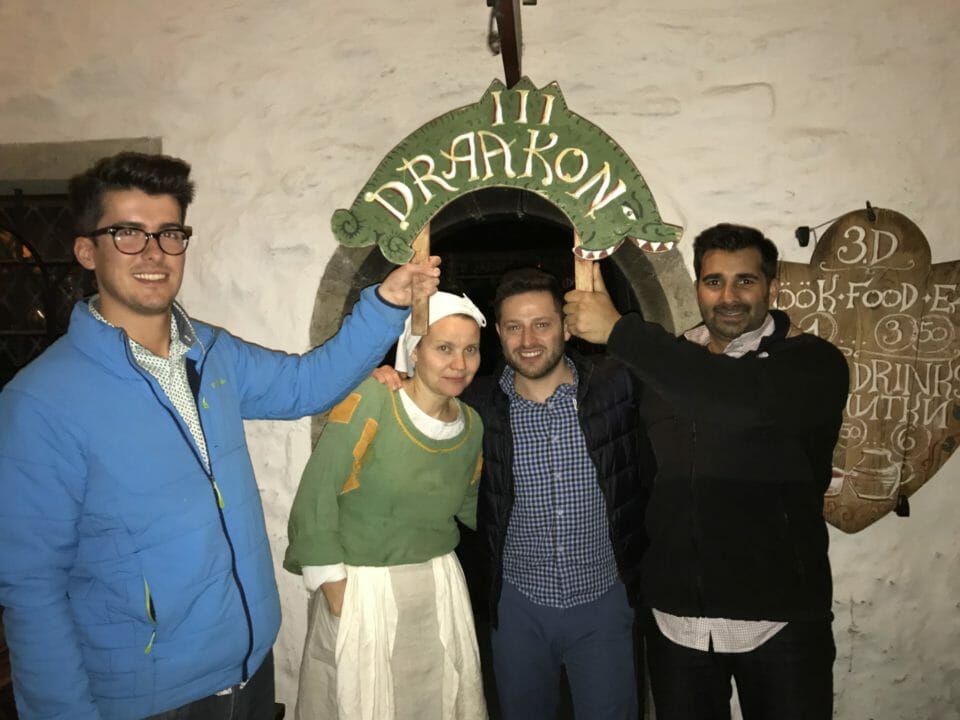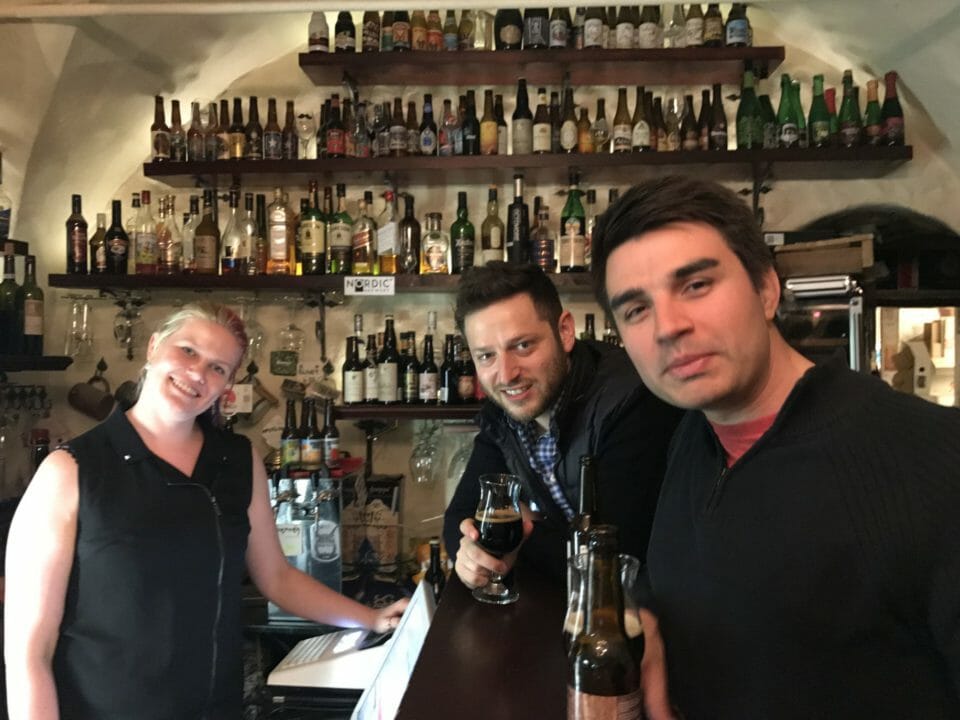Tallinn is one of the oldest cities in the world, with its name dating back to the 13th century. Its Old Town is one of the best preserved medieval cities in Continental Europe, and everything about it feels historical. The city is replete with cobblestone streets, Medieval architecture, remnants of Castle walls and charming stores and restaurants. Outside of the well-kept, tree-laden Old Town you can see high rise office and residential buildings looming over the older parts of the city, a sign of a healthy economy with a highly literate population. While Tallinn’s economy has long centered around tourism and logistics (given that it is located on the Baltic Sea) its finance, energy and information technology sectors have been growing.
Trip Report Series:
- Review: Air France Lounge, New York JFK Terminal 1
- Three Days in Vilnius, Lithuania
- Review: IDW Esperanza Resort Lounge, Vilnius Airport
- Three Days in Riga, Latvia
- Review: Primeclass Business Lounge, Riga International Airport (RIX)
- Review: Air Baltic Economy Class, Riga to Tallinn
- Three Days in Tallinn, Estonia: A Foodie’s Paradise!
- Review: Tallink Megastar, Tallinn to Helsinki
- Review: Aspire Lounge, Helsinki Vantaa Airport
- Review: KLM Business Class, Helsinki to London Heathrow (via Amsterdam)
- Review: Virgin Atlantic Clubhouse, London Heathrow
- Review: Delta One Business Class, London Heathrow to Atlanta
It goes without saying, everything is new and old again in a city like Tallinn. Unlike most “cruise stop” places, the city doesn’t experience a peak of tourist traffic during the daylight hours and grow dead and dreary at night. In fact, quite the contrary: I was stunned by how lively and packed Tallinn’s Old Town streets well into the wee hours of the night. Since I visited during late May, obviously the longer days and the Northern hemisphere daylight window created an ambiance where the locals live to be night owls.
Lodging and Transportation
The city, in particular, Old Town, is very walkable, although Uber and public transportation are also readily available. Very inexpensive Airbnb’s are plentiful, and well within walking distance of the Old Town area, if not located in the heart of Old Town itself. There are also plenty of renown brand-name hotels in the area.
Flights into Tallinn airport are fairly plentiful. Airbaltic flies to Amsterdam, Berlin, Paris, Riga, Vienna and Vilnius, and more common carriers such as SAS, Lufthansa, Finnair, British Airways, Turkish Airlines, LOT and Aeroflot also operate from their respective hubs across Europe. The largest carrier at TLL is Nordica, which is a regional operator that operates on behalf of LOT, and flies to most of the major European and Scandinavian cities from Tallinn. A cab fare from the airport to the city costs no more than 5 to 10 EURO.
One thing that is slightly disappointing about Tallinn is the waterfront, which, unfortunately, is not very scenic nor charming. Given that it is a port, and shipping and logistics are so important to the local economy.
Around Old Town
The best part about Old Town Tallinn is that you don’t need a map to walk around in it. Everywhere you turn, you are bound to see something that will be a sight for sore eyes. The buildings are colored in different shades of pastel with cheerful rooftops, prominent chimneys, cathedrals, and stone. You feel like you’re in a Disney film, a children’s fairytale book or Hogwarts, all mixed together.
All roads lead, in one way or another, to the Town Hall Square in Tallinn. You’ll see everyone gathering there, and restaurants are on about every corner. However, I highly recommend choosing restaurants slightly off the beaten path (more on that later) simply because the ones that are right in the center of Town Hall Square tend to be a bit more touristy and pricey, and the food is so-so. You cannot afford to miss out on the incredible cuisine that Tallinn has to offer.
Back to venturing around Old Town, you’ll find the onion-domed Alexander Nevsky Russian Orthodox cathedral, which was completed in 1900, and ushering in the Russian influence into Estonia’s architecture and religion.
Slightly further up, you’ll come across the Tallinn Town Wall, which essentially was constructed to keep the town protected against medieval invaders. There are over 20 defensive towers still standing in the city, and 1.9 km of the city wall (it was once as long as 2.4 km) is still intact. Visitors can climb up the tower walls and enjoy very pretty views of the town.
St. Olavs Church and Tower is a must-do. Wear your walking shoes, and make the climb up the stairs to the top of this Gothic Church. Trust me, it is well-worth the calorie burn. It was at one point the tallest building in the world (from 1549 to 1625) and it provides the BEST views of the city, its surrounding areas and the Baltic Sea. It costs 3 EUR to go up, and it is open from 10 AM to 6 PM daily.
After you’ve hiked down from St. Olav, it is time to explore some of the shops in the old town area. You’ll find a lot of bakeries that sell fresh-baked bread and sweets like Marzipan, which is always a nice (and relatively inexpensive) gift to take back home. Along the street called, “Lai” you’ll find a ton of galleries and museums which are worth popping your head into.
Now that you’ve done all of your walking, it is time for a drink and a refreshment. This is where I suggest going to Taani kuninga aed, which translates to the Danish King’s Garden. Rumor has it that this is the spot where a flag descended from the sky during the Danish invasion in the 13th century. This is a really peaceful spot in Tallinn that is filled with benches, trees and a wall – literally – that you can climb up to a have a drink at the Dannebrog Tower Café.
You literally have to climb a ladder to get up there to the place, and it is a steep climb to get there. At the Dannebrog cafe, you can order beers (we ordered Mead) and then sit at one of the tables on top. Be warned: it is pricey, and perhaps a bit of a tourist trap, but hey, how often do you get to have a drink on top of a Castle wall?
Food and Drink
The dining in Estonia is spectacular. There are many places worth trying, but there are two I want to draw attention two in particular. However, these are the ones that I recommend for being really good meals that we had for lunch and dinner:
- Clayhills Gastropub: this is a foodie-adventure type of place. Incredible beers on tap, live music, and good prices. Very elegant, great service and not too touristy.
- Balbuja: Russian flair, but with a twist. You’ll find your comfort foods here like dumplings, blinis, borscht, and crepes. You can’t go wrong!
Leib Resto ja Aed
We went here on a Sunday afternoon for lunch. Granted, be prepared for it to be a fairly drawn-out affair. The restaurant is inside of a garden, and if you can score outdoor seating, go for it. You can see the food being prepared in the kitchen literally feet away from you. The drink menus are extensive and the appetizers are to die for. You’ll want to sample a bit of everything with Estonian bread (Leib – bread in Estonian) which has Rye flour in it. It is thicker and stickier than most breads we’re accustomed to in other parts of the world. The Estonians like to toast it (lightly) and it makes for a fantastic dish.
For the main, I ordered the Quail. It is paired with some phenomenal, fresh vegetables and tasted succulent.
Because this is a bit more of an upscale restaurant, you will want to call ahead and book in advance.
III Draakon
Okay, so this may have been a place we stumbled into on total accident, but boy was I glad that we did! This is a real medieval tavern where you can have fresh soup, delicious pies, elk soup and hearty ox that you simply just gnaw right off the bone, pickles that you spear out of a barrel and delicious, cheap beer and wine. It is a totally touristy place, but oh so fun. The landlady at the tavern will sell you the food right as you walk in, then you can sit down and she’ll serve you your food right as it comes out. It is largely an act, but the interior is just spectacular. Even the bathrooms look super unique by the way the plumbing has been designed.
Nightlife
Tallinn is Ballin when it comes to nightlife.
We visited a rooftop bar called Katusekohvik just to get the night started. It has a beautiful open air deck that is definitely worth checking out.
Across the street, there is the Helsinki Bar, which is a fun karoake spot, packed with locals.
My all-time favorite place, however, was Manna La Roosa, which is an AMAZING cocktail bar in Tallinn. If you like Grayhounds and grape-fruit based drinks, or whiskey, this will be one you do not want to miss! It is very trendy and a great place to wind up the night after you’ve gone bar-hopping in Tallinn.
The next night was a bit more Bohemian. We went to Depeche Mode Baar which, true to its name, exists out of homage to the band and to its fans. The cocktail list is just absolutely brilliant. You’ll find all types of funky drinks that are available, along with loungey type areas to relax and rest.
Next stop was Koht/Moonshine bar, which is famous for its craft beer. It’s very cozy inside and you can see all of the beers out on display. The bartenders are friendly and will recommend some of the local drafts to you.
You’ll also find tons of clubs and dance venues in Tallinn, which appeared to be very non-pretentious and fun (we didn’t make it into any, sadly, which would have been a 3-peat for the Baltic states after Solento in Vilnius and Coyote in Riga. We also did not make it to the Radisson Blu Skybar in Tallinn, either).
Final Verdict: Tallinn is a Remarkable, Cultural City
Tallinn was a great place to round out all three Baltic States. I was so happy that I continued to travel to Estonia and experience so much of its history, its food, its culture and its people. I would definitely not hesitate to come back here.
To read my other two trips to the Baltic states, check out:

















